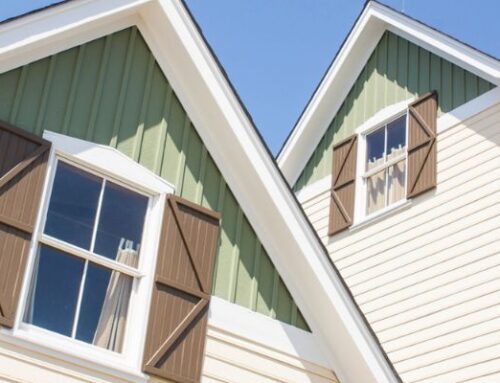Step outside your home and take a moment to appreciate its facade – a harmonious blend of architectural design and protective layers, with siding serving as the silent guardian against nature’s elements. While often overshadowed by interior renovations, the condition of your home’s exterior deserves equal attention to maintain its integrity and charm.
In this expertly crafted guide, we’ll embark on a journey through the intricate realm of siding repair and replacement, guided by the wisdom of seasoned professionals. Whether you’re a DIY enthusiast or a homeowner seeking practical advice, our aim is to equip you with the tools and knowledge needed to approach siding projects with professionalism and precision.
Join us as we understand the essential dos and don’ts of siding maintenance, offering invaluable insights to ensure your home remains both resilient and visually appealing. With our guidance, you’ll navigate the world of siding repair and replacement with confidence, safeguarding your investment and enhancing your home’s curb appeal for years to come.
Let’s begin this journey together, as we explore the art of mastering siding repair and replacement with the expertise it deserves.
Dos:
- Inspect Regularly: Regular inspections are key to identifying issues before they escalate. Look for signs of damage such as cracks, warping, or moisture buildup. Addressing problems early can save you from costly repairs down the line.
- Prioritize Safety: Before undertaking any repair or replacement project, prioritize safety. Use appropriate protective gear such as gloves, safety glasses, and a sturdy ladder. If the task seems too daunting, consider hiring a professional.
- Choose Quality Materials: Invest in high-quality siding materials that are durable and suited to your climate. Quality siding not only enhances the appearance of your home but also provides better protection against the elements.
- Follow Manufacturer Guidelines: Whether you’re repairing or replacing siding, always adhere to the manufacturer’s guidelines. Improper installation or usage can void warranties and lead to future issues.
- Prepare Surface Properly: Proper preparation of the surface is crucial for ensuring a successful siding installation. Clean the area thoroughly, remove any old caulk or debris, and make any necessary repairs to the underlying structure.
- Maintain Proper Ventilation: Adequate ventilation behind the siding is essential for preventing moisture buildup and mold growth. Install vented soffits and ensure that the siding is properly spaced from the underlying surface to allow for airflow.
- Seal Joints and Gaps: Properly seal all joints and gaps to prevent water infiltration. Use high-quality caulking or sealant designed for outdoor use. Pay special attention to areas around windows, doors, and corners.
- Consider Energy Efficiency: When replacing siding, consider opting for energy-efficient materials such as insulated vinyl or fiber cement. These options can help improve your home’s energy efficiency and reduce heating and cooling costs.
Don’ts:
- Ignore Signs of Damage: Ignoring signs of siding damage can lead to more extensive and costly repairs down the line. Address any issues promptly to prevent further deterioration.
- Neglect Maintenance: Regular maintenance is essential for extending the lifespan of your siding. Neglecting maintenance tasks can result in premature deterioration and the need for early replacement.
- Cut Corners on Installation: Cutting corners during installation can compromise the integrity of your siding and lead to issues such as water infiltration or warping. Take the time to install siding properly, following all recommended procedures.
- Forget to Check for Permits: Depending on your location and the extent of the work, you may need to obtain permits before undertaking siding repairs or replacements. Failure to do so could result in fines or complications when selling your home.
- Use Incorrect Tools or Techniques: Using incorrect tools or techniques during siding installation or repair can result in subpar results and potential damage to the siding or underlying structure. Always use the right tools for the job and follow best practices.
- Neglect Insulation: Proper insulation behind the siding is essential for energy efficiency and preventing moisture buildup. Don’t neglect this crucial step during installation or replacement.
- Paint Unfinished or Wet Surfaces: Painting unfinished or wet siding surfaces can lead to poor adhesion and premature paint failure. Ensure that the surface is clean, dry, and properly primed before applying paint.
- Overlook Professional Help: While DIY siding repairs are feasible for some homeowners, complex issues or extensive replacements may require professional assistance. Don’t hesitate to seek help from experienced professionals to ensure the job is done right.
Conclusion:
Mastering siding repair and replacement requires attention to detail, proper techniques, and a commitment to quality. By following the dos and don’ts outlined by industry professionals, you can ensure that your siding remains in top condition, protecting your home and enhancing its curb appeal for years to come. Remember to prioritize safety, use quality materials, and adhere to manufacturer guidelines for the best results. With the right approach, you can tackle siding maintenance with confidence and keep your home looking its best.






